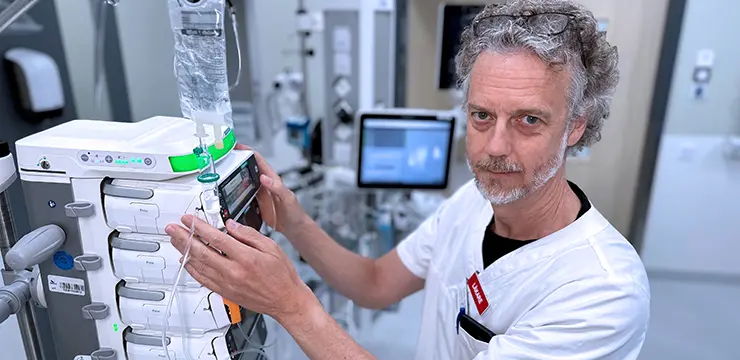Continuous antibiotic for sepsis improves survival rates

Patients with sepsis or septic shock are usually treated in an intensive care unit (ICU) and receive antibiotics. One of the most common types of antibiotics are the beta-lactams, that traditionally have been administered as intermittent infusions, meaning injections given at regular intervals throughout the day.
“Smaller studies have suggested that beta-lactam antibiotics are more effective when given as a continuous infusion. However, these studies have been too small to draw definitive conclusions, hence the need for a large clinical trial,” says Fredrik Sjövall.
Large international study
To determine which treatment method yields the best results, researchers from 70 ICUs in seven countries collaborated on a large international study, Bling III. Over 7,000 patients participated in the study, including about 150 from Skåne, Sweden.
ICU patients treated for sepsis received either antibiotics at regular intervals, as before, or as a continuous infusion. The researchers then tracked and analysed mortality rates at 90 and 180 days.
Improved survival rates
When researchers adjusted the analysis for factors such as age and severity of illness, survival rates improved with continuous antibiotic infusion. The results were recently presented at a conference in Belfast, Northern Ireland, and published in JAMA.
The findings were also supported by a meta-analysis including previous similar studies, which was also presented and published at the same meeting and journal.
“The meta-analysis strongly indicates that continuous infusion is advantageous. Ninety-day survival increased by 2%. While this may seem small, given the number of people treated in ICUs worldwide, this method could make a significant difference”, says Fredrik Sjövall.
Steady antibiotic concentrations
Continuous infusion likely yields better results because it maintains steady antibiotic concentrations in the blood over a longer period, Fredrik Sjövall explains:
“This makes the antibiotic more effective at killing bacteria.”
Fredrik Sjövall suggests that ICUs worldwide should consider switching from intermittent to continuous infusion.
“Compared to current standards, continuous infusion requires a pump, which may be a resource- and possibly an economic issue. However, there are few other disadvantages.”
Paediatric studies needed
The study was conducted with adult ICU patients. Fredrik Sjövall believes follow-up studies with paediatric patients are necessary to see how children are affected by different treatment methods. One theory is that children might benefit even more from continuous infusion because their organs metabolise some medications faster than adults. Therefore, a more stable supply of antibiotics could be more advantageous.
“It would also be useful to have studies on the appropriate duration for continuous infusion”, Fredrik Sjövall concludes.

